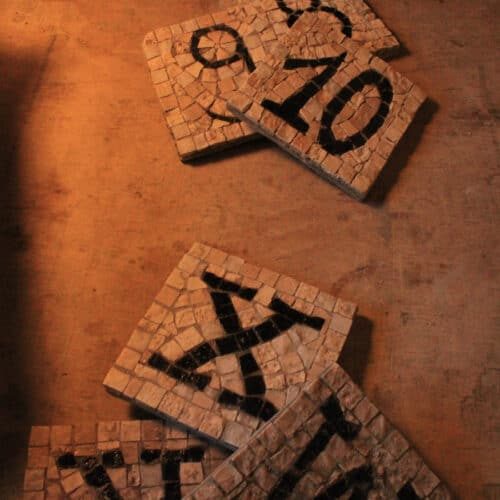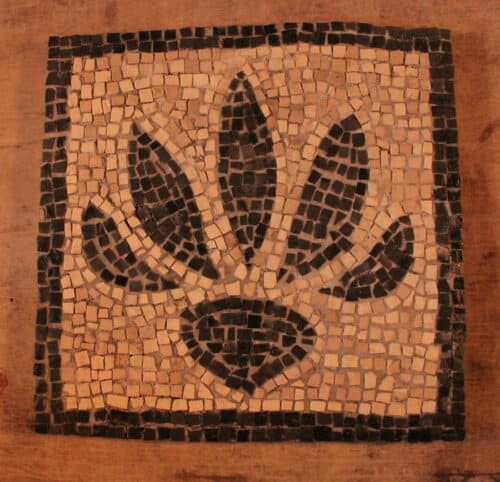Aegea Mosaici
An interview with Aegea Mosaici in Trastevere, Rome
Inside a beautiful atelier near Rome’s Botanical Gardens, the tradition of mosaic making is kept alive
Warm, golden sunlight pours in through the windows of this atelier tucked away in the quiet heart of Trastevere. A modest chestnut door bears the name “Aegea Mosaici ” in tiled letters that were laid by hand. Just meters away, the Botanical Gardens of Rome bow over the quaint sidestreet where Aegea Mosaici hides itself like a blushing rose.
One must have a keen eye to spot the entrance to this hidden artisan workshop. Set among rose-colored buildings on the cobblestones of Via Corsini, the remarkable beauty of Aegea Mosaici extends beyond the shop’s delicate facade. Inside, the walls are wrapped in handcrafted mosaics made from tessellating marble fragments. Mosaics with floral patterns dance in the sunlight, and larger one-of-a-kind pieces grab the eye’s attention.


Nadia Ridolfini of Aegea Mosaici has cultivated her craft since she was a young child and has emerged a master of the mosaic arts. A life-long Roman, her designs marry Italian classics with international inspirations. “By chance, I worked in an atelier, and learned the techniques of mosaics for 3 years.” Nadia said. “I found it interesting. It united design work and practical work. It is something more useful than other forms of art.” She then studied at the Accademia Di Belle Arti in Rome to learn the technique of mosaics and became a teacher after she finished schooling.
“L’artigianato aiuta la mente a placarsi, è terapeutico.” – Art heals the mind, it’s therapeutic.
Though Nadia’s roots have always been in the soil of the Eternal City, her passion for art has taken her all over the world. Previously, she lived and taught in Central Africa where she shared the art of mosaic making with disabled children. The materials used in this atelier reflect her multinational experiences. The marbles used come from Africa, Spain, Brazil, China, and many other countries, each with its own unique characteristics.



Rome is often remembered for its cobblestone streets that bear the footsteps of ancient Romans, but there is a precise beauty in the mosaics that quietly coat the city in marble. Mosaic work fills the heart of the Eternal City. Nearly every church is studded with intricate designs depicting religious scenes. Santa Maria Maggiore in Trastevere glimmers with Pietro Cavellini’s portrayal of Virgin Mary. The apse of San Clemente depicts important Christain motifs, and the mosaics of the Vatican wrap the basilica in shards of golden light, reflecting years of collected heritage laid by the hands of artisans from centuries past.
When you walk into a church in Rome, observe the walls and floors – intricate mosaics tell a thousand stories in wordless poetry. The mosaics of the Eternal City offer glimpses of Roman life through the ages, and make clear what they valued the most.
Today, the tradition is continued in its original form in the workshop of Aegea Mosaici. And the art form is available to amateurs, through workshops offered by this atelier.
If you stroll through the residential areas of Rome, such as Monteverde Vecchio or parts of Trastevere, you will notice the mosaic numbers that dictate the street addresses of the homes. This stylistic choice is observable across Italy’s regions – from Sorrento to Venice, mosaics have made their place in the home.
Aegea Mosaici offers this tradition to overseas customers with their A-Z and 0-9 mosaic tiles, which are perfect for the embellishment of any type of house.





















